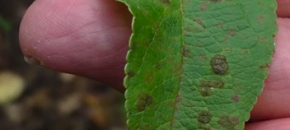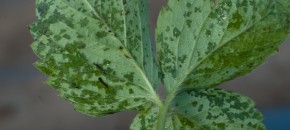New Jersey farmers are urged to send in comments by November 15th regarding the Proposed Produce Safety Rule and the Proposed Preventive Controls Rule. It is expected that about 20% of New Jersey farms will be expected to comply with the Produce Safety Rule. Several components of this rule have the potential to impact the […]
Continue reading...Dormancy in October? It is very dry and cool.

By Jim Murphy I spent a couple days this past week teaching in a turf care training program at Central Park in NYC. Many lawn areas in Central Park that are not irrigated were entering dormancy because of the dry soil conditions. And as you look around there is an increasing acreage of turf as […]
Continue reading...Integrate Sanitation Into Your Apple Scab Control Program

This past season we saw elevated levels of apple scab in southern counties. Our IPM scouts found low levels of scab present in orchards where scab had not been detected for many years, even though these orchards had been carefully sprayed using effective materials. Most likely what we are witnessing is the result of an […]
Continue reading...Late Blight Confirmed on Organic Tomato in South Jersey
Late blight was confirmed in an organic tomato field late last week south of Bridgeton, New Jersey. As a note, growers who are still picking tomatoes should continue to scout up until the final pick and destroy field as soon as possible once harvesting is finished either by applying gramoxone or discing under plant material. […]
Continue reading...Veg IPM Update: Week Ending 10/09/13
Vegetable IPM Report 10-09-13 – Click to View | Download | Print Current Week’s Pest Maps – Available Maps for the week are highlighted European Corn Borer Map Corn Earworm Blacklight Map Corn Earworm Pheromone Map Brown Marmorated Stinkbug Map Vegetable IPM Pest Map Archive
Continue reading...Angular Leaf Spot in Fall Transplanted-Strawberries

There have been a few reports of angular leaf spot (ALS) caused by the bacterium, Xanthomonas fragariae, in strawberry in the northern part of New Jersey. Often considered a minor pathogen, ALS can cause serious leaf and calyx infections ruining the marketability of fruit if left uncontrolled. Like all bacterium, the pathogen will infect leaves […]
Continue reading...